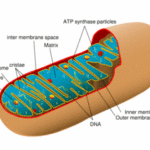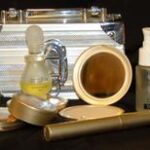“Keratoconus (KC) is a thinning disorder of the cornea that causes distortion and reduced vision. In its earliest stages, keratoconus causes slight blurring and distortion of vision and increased sensitivity to light. These symptoms usually first appear in the late teens and early twenties. Keratoconus may progress for 10-20 years and then slow or stabilize. Each eye may be affected differently.”
National Keratoconus Foundation (NKCF)
According to the information I can find about this disease, only one in about 2000 people get it. No one is really sure why but it is thought that it is inherited. No one knows.
Keratoconus is usually diagnosed in one’s teens, but I wasn’t diagnosed then. I could see then. The first time I even had a hint of keratoconus was in my late thirties. Then an eye doctor told me that my left eye was shaped like a football. That was all that was said. There was no mention of keratoconus. There was no mention of what that football shape could lead to. There was nothing. I didn’t even need glasses until my forties. Even then the three different eye doctors I saw for my glasses mentioned that my left eye was shaped like a football but nothing else was said about karatoconus. Nothing. That is quite bad. If this disease is diagnosed early things can be done before it reaches the stage my eyes are at now. This is just one more reason a good eye examine by a good doctor is so important.
It wasn’t until three years ago that the eye doctor I use now told me that I had keratoconus and just what that really meant. By that time it was far progressed. He told me then that he thought I needed to see a specialist and that a cornea transplant was in my future. He even told me that he thought that my left eye needed a transplant then. I just couldn’t wrap my head around that at that time.
How does keratoconus affect a person’s eyesight? I am going to quote my favorite kaeratoconus website. Trust me, I know the web sites. I have been doing a bunch of reading.
“The cornea is the clear window of the eye and is responsible for refracting most of the light coming into the eye. Therefore, abnormalities of the cornea severely affect the way we see the world making simple tasks, like driving, watching TV or reading a book difficult.”
The symptoms include the following things.
Increased light sensitivity
Difficulty driving at night
Halo’s and ghosting especially at night
Eye strain
Headaches and general eye pain
Eye irritation, excessive eye rubbing
National Keratoconus Foundation (NKCF)
What causes these symptoms? According to my eye doctor and surgeon, my corneas look like the belly of a pregnant woman. They bulge. Many woman get stretch marks around that baby bulge. I have stretch marks and scars around the bulges of my corneas. There are also bumps and ripples on the corneas. Those scars and bumps and ripples are the cause of the halos and blurriness.
The difficulty driving at night was my first clue that something was really wrong. Three years ago in November. I suddenly noticed that the lights haloed so badly that seeing to drive in town was very difficult. It was sudden. I don’t know if it was because I hadn’t done much night driving during the summer or because of something else. My eye surgeon says that my left eye had a tear all away the cornea that has caused scarring. Maybe that is why it seemed so sudden. I don’t’ know.
I just know that now the haloing is a HUGE HUGE HUGE issue. It more than anything else interfered severely with my quality of life. Every light halos. They were not small halos. They are huge bright halos. Every sign, every street light, every headlight, taillight, stoplight, every light halos at night. It interfered with my ability to see the road or turnoffs or other cars. The halos were bright enough and big enough that they were all I saw when driving at night in town. Driving in the country wasn’t as bad because there are not as many lights, but it is still not safe. I really did drive by memory.
Sunny days were also bad. If the sun hit any kind of reflective material like a car or a window or anything metal or a sign, it halos blocking my sight. I can’t crochet with a silver metal hook because the sun or the light will cause a halo that keeps me from seeing my stitches. I have to use dull colored metal hooks. The lights in my home and at work halo. The lights at church halo. Because of that, I hadn’t seen Pastor’s face when he was standing behind the pulpit in years. When the lights in the church reflect off of the metal parts of the chairs at church or the shinny parts of the guitars or microphones, there are haloes. I couldn’t who was on stage playing the instruments.
This haloing is what made me want the transplant. I was in denial for a long time about how severely this disease affected me. I didn’t want a transplant, but the halos did me in. If it corrected just that or even reduced them, it would be worthwhile.
I did have ghosting but not a lot. We replaced the light fixtures in my office with the new ones that are now required above the front counter. All the lines on the forms I had to fill out had doubles. I had a hard time deciding where to write. I just did it. That was all the ghosting I have.
Blurring was almost as bad as the halos. I didn’t see cars on the highway until they were close to me. I saw blurry gray blobs that I assumed were cars. When the blob got close to me that blurry gray blob would become be one car or several cars. I wouldn’t know until the car was close.
I did not see street signs. I saw green blobs. To read them I would have to stop the car and get out and left up my glasses to peer thought the bifocal part.
That summer sitting with my parents on their screened in porch, my dad would tell me to just look and see how man hummingbirds were coming to his feeder. I couldn’t see them. I laughed at him. In the past I had been a bird watcher. That was over because I couldn’t see them.
In the past I was also a very amateur astronomer. I could not do that any more either. I couldn’t see the stars in the sky. I just could not.
I kept the computer at home and the computers at work on big fonts. I have reduced the font on this letter for the benefit or my readers, but I wrote it in this font. This is the font I read on the computer.
I didn’t’ have much trouble reading books as long as I got it in the right place and if the light was right. I could put the book as close as I wanted. Books don’t’ have a light behind the letters like a computer does, so I didn’t much problem reading. I couldn’t read in the car if the sun is shinning.
I couldn’t see across the dome at church. I know that the blob in that chair is probably this or that person because that is where she sits normally but it could be one person or the whole family for all I knew. I wasn’t be able to tell unless one of them moves.
Some days the blurriness is worse than others. I thought it might me physical but I had all of those kinds of things tested. It is not. My research about this disease explained it. How bad can it be? The day my grandmother went home to be with the Lord, I drove myself to see her. I didn’t drive after that. I knew the way but it had been a while since I had driven that way. I couldn’t see when to turn. I had to almost stop in the middle of the road to see where to turn many times. I know I was driving people nuts. I left early because I knew I could NOT drive home in the dark. It was the only time I can ever remember being afraid while driving without snow being involved. It was pretty much my last driving
Treatment
“Treatment options for keratoconus focus on correcting the distorted vision caused by the thinning and bulging of the cornea.
Rigid Gas Permeable contact lenses (abbreviated to RGP or GP) will correct vision as KC progresses. The rigid lens material enables the lens to vault over the cornea, replacing the cornea’s irregular shape with a smooth, uniform refracting surface to improve vision.”
National Keratoconus Foundation (NKCF)
That isn’t available to me at this time in my life. One reason is that I have never worn contacts of any kind making rigid contacts very difficult for me. Frankly, my left eye was way past that kind of correction.
The left eye? Well . . . .That is going to take a transplant. When I went to see my eye surgeon, the techs that performed this and that test told me that Dr. Cavanaugh was a very conservative doc. He would do everything he could before resorting to a transplant. Mom and I were happy. I really hoped there were steps that could be taken first. No such luck. The doctor took one look at my left eye and said, “Wow, that’s a transplant.”
Cornea transplants are a 30 to 40 minute surgery. The patient is awake. There is almost no pain afterwards. It is an outpatient surgery.
“Because the cornea has no blood supply, the transplant heals relatively slowly. Sutures are left in place for three months to one year, and in some cases if the vision is good, they are left in permanently. The sutures are buried and therefore don’t cause discomfort. Occasionally, they do break and then need to be removed. Often they are removed, adjusted or loosened to improve vision. Suture adjustment and removal are simple, painless office procedures.”
National Keratoconus Foundation (NKCF)
There is a possibility that my vision will improve almost instantly but there will be changes for up to a year. It will be a year before we know just how much improvement there will be. It will improve. We just have to wait and see just how much. I will always need glasses.
I have researched the rejection rate. Some sites say up to twenty percent and some say as low as two percent. I have read that if I get through the first year without rejection, my chances of no rejection are greatly increased. I will have eye drops that I will take the rest of my life. That is all there is to it.
This is really a big quality of life issue for me. I was not happy not being able to drive myself when I want to. I had been relying on my husband, Mom and Dad, and Jed. I was looking forward to getting this taken care of. I was looking forward to an improvement in my sight.
Did I get that? Next entry.
National Keratoconus Foundation (NKCF)
Dr Timothy Cavanaugh MD Ophthalmologist
Keratoconus School of Optometry, Indiana University Written by Dr. Vonda Lee Heverly, O.D. & Dr. Gerald Lowther, O.D.,



